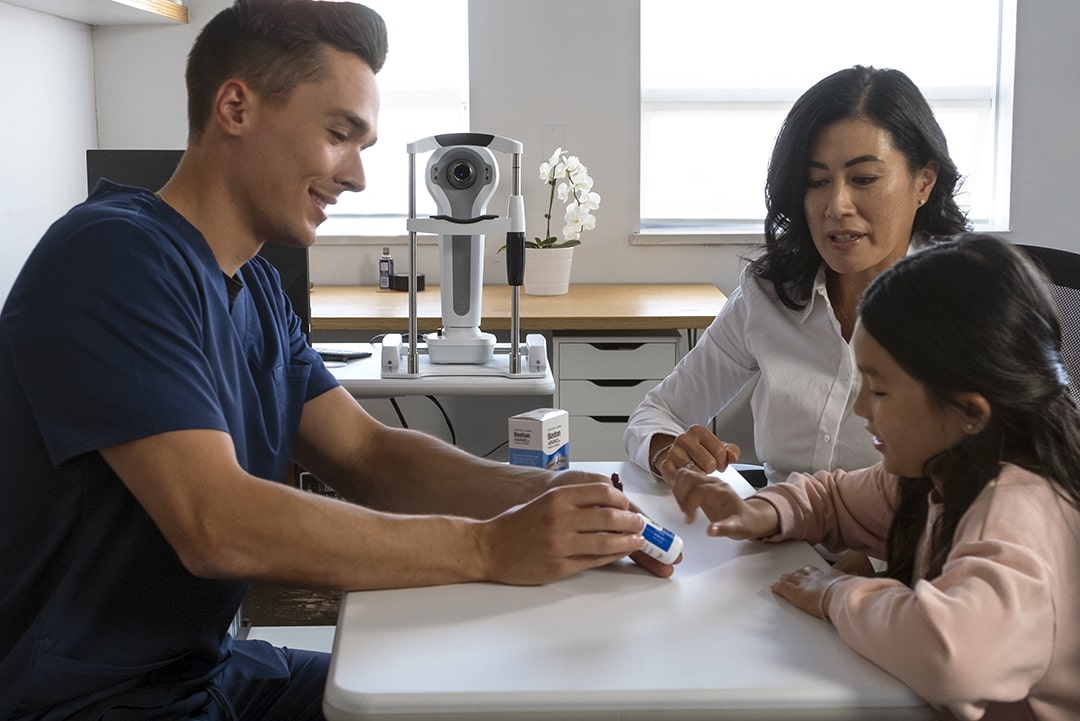4 Tips to Improve PX

Shift the Focus to PX in Your Optometry Practice with these 4 Tips
Often the difference between your success and that of another optometry practice may not just be in the equipment you use. While cutting-edge tools are important in staying on top of the services your practice offers, to gain a competitive advantage, you may want to consider looking at the person behind the equipment. Did you know that how practitioners make patients feel is essential to keeping them coming back?
In this next post in our DYK series, Dr. Eric To, O.D., FSLS, of Lumen Optometric, and Aaron T. Wolf, O.D., of Austin Optometry Group, share their top tips on how to shift the focus to the patient experience to elevate your practice.
#1 – Manage Patient Expectations
Whether it’s dry eye disease, myopia, or an annual eye health exam, Dr. To and Dr. Wolf agree – managing patient expectations should be a tenet of your treatment. Some patients will never achieve 20/20 vision despite treatment options available. Whether it’s your first time with your patient or you’ve had a long relationship with them, it’s best to be honest about what they can expect at every step in your treatment recommendations.
When a patient loses confidence in your skills, as a practitioner you may end up trying to “save face,” as Dr. Wolf notes. While it is possible to overcome overestimating the result of treatment, it’s not an ideal way to begin a patient relationship. Being honest and forthright about treatment and management outcomes may eliminate long term disappointment when their corrected vision isn’t 20/20.

#2 – Communicate Clearly
Help improve your patients’ sight when you communicate clearly. You spent several years in school and residency to be able to diagnose and treat your patients. Most patients won’t understand medical terminology or be able to decipher treatment plans the first time through.
Dr. To recommends using consultations as an opportunity to connect with your patients. If you spend a few extra minutes having a transparent, two-way conversation, you create partnership with your patients, instilling trust in your treatments.
#3 – Get to Know Your Tech
Sure, having the newest, sleekest, and most versatile corneal topography tool is great. But have you asked yourself what your technology can do for you? Making an investment in technology is great for business, particularly if it’s a tool that will increase your efficiency and maximize your ROI. However, what good is it if you don’t understand how to use it.
Take advantage of training tools and support services available. And trust the intuition of your tools, says Dr. Wolf. The right tool will provide valuable information and imaging, innately, and in turn, can be a road map to successful treatment.

#4 – Keep Your Patients in Focus
When you love what you do, it shows. As with every type of healthcare, when ODs find their niche, the passion for what they do is evident in the patient experience. For Dr. To, helping kids to see is the highlight of his optometry practice. His joy is evident in his work, too. Meanwhile, over in Austin, Dr. Wolf finds specialty lenses equally rewarding and challenging. For both Dr. To and Dr. Wolf, consistently learning and evolving in their respective practices to elevate the patient experience is always the goal.
Practice Makes Perfect*
*There’s no such thing as perfection, especially in healthcare.
When practitioners understand that transparency, communication, continuing education, and passion make your optometry practice stand out from the rest. Do you have any tips on enhancing PX? Share them and this post on social using the links below. While you’re there, please give us a follow on LinkedIn and Facebook for more #DYK tips. And if you’re in search of a new technology to optimize your optometry practice, schedule a demo of the medmont meridia™ Advanced Topographer today.
